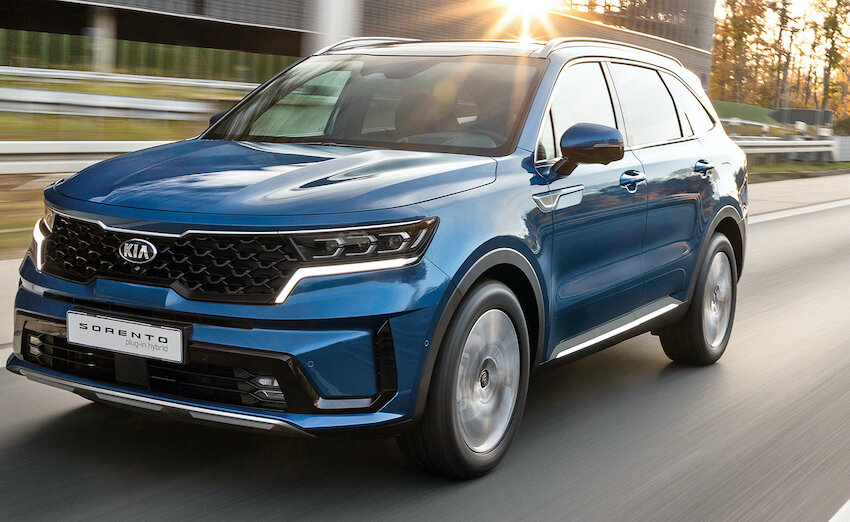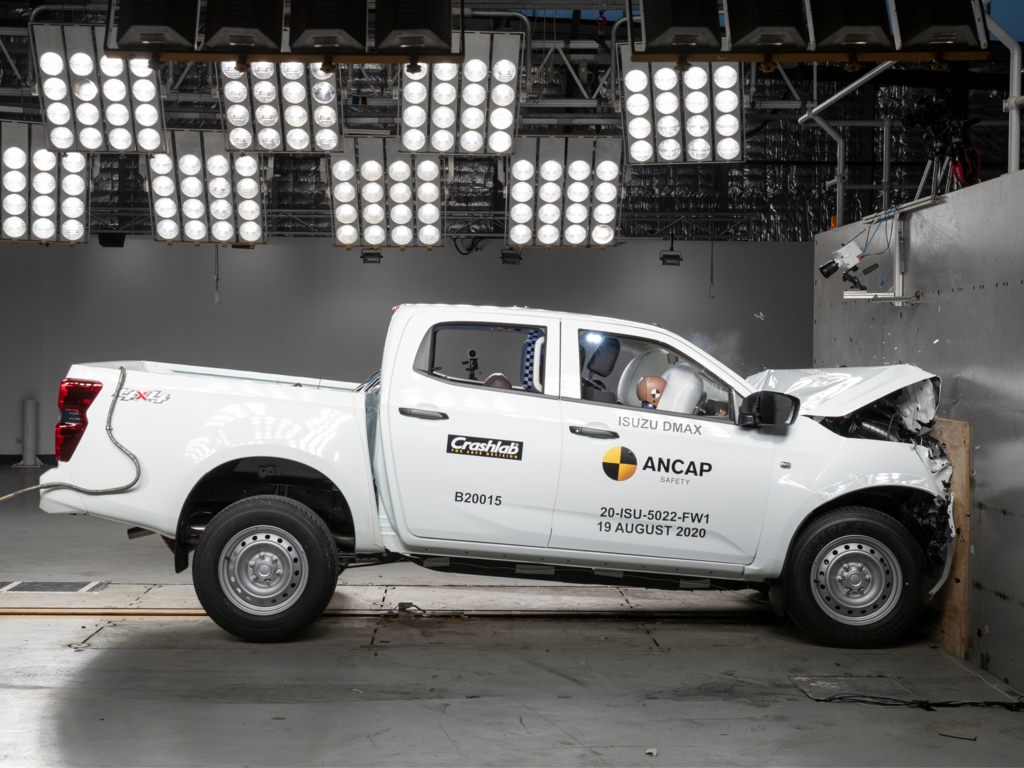NZ-spec ID cars’ in ANCAP spotlight
/Five star scores awarded but incomplete driver assist suite also noted.
Read MoreFive star scores awarded but incomplete driver assist suite also noted.
Read MoreANCAP result for CX-60 is from a test conducted to since-updated protocols.
Read MoreMercedes’ latest electric achieves optimal star count from region’s tester.
Read MoreSide impact and whiplash protection scores slightly better than Ranger’s.
Read MoreCompact Ora hatch among models singled out for recognition by Euro NCAP.
Read MoreArrival of the Puma hybrid comes as Euro NCAP alters the model’s safety rating
Read MoreElectric models’ crash test performances assessed by ANCAP.
Read MorePerfect scores in two aspects of crash testing picked out for particular praise.
Read MoreNZ-backed agency’s five star score is specific to our market.
Read MoreNational safety accreditor impressed with top-selling ute and its incoming wagon offshoot.
Read MoreDistributor’s schedule announced as safety auditor airs intent
Read MoreNZ-accredited assessor notes revised edition en route to NZ might do better than original format put to test.
Read MoreRenault NZ explains why it has had to drop its only electric car and lends insight into potential future alternates.
Read MoreMitsubishi’s load-all only came on sale two years ago and was cited for poor crash worthiness.
Read MoreAn impressive five star ANCAP score for Toyota leviathan
Read MoreRenault’s NZ agent reckons the car sold here counts as being safer than a version that’s been shamed by a leading crash testing agency.
Read More
TWO large sports utilities recently introduced to New Zealand have both received five star scores from the nationally-recognised safety ratings agency, one from testing in Europe and the other as result of a process undertaken in Australia.
The Land Rover Defender’s score comes from a test undertaken by European New Car Assessment Programme (NCAP) and applies to the long-wheel-based, five-door 110 model that is on sale in NZ, and not the short-wheelbase three-door 90 yet to release.
The Kia Sorento’s outcome was also determined by the European agency, however the score it gets comes with stamp from its Australasian sister organisation, ANCAP.
This is a procedural process but means that the ANCAP rating is only relevant to the 2.2-litre turbodiesel, all-wheel-drive variants – the only choice in Europe - and not any front-wheel-drive, 3.5-litre petrol V6 Sorentos that are built for other places. Those go unrated.
Helping the Sorento achieve its five-star safety rating and 82 per cent score in the Adult Occupant Protection category is the inclusion of a centre airbag, designed to prevent front occupants colliding with one another in a severe side impact.
It is only the third vehicle – and the first family SUV – with such a technology to be tested by Australasian or European safety authorities.
The Sorento received an 89 percent score in the Safety Assist category – the highest since the introduction of ANCAP's stricter 2020 testing protocols – with the safety body celebrating Kia's inclusion of driver attention monitoring as standard, and an autonomous emergency braking system capable of braking for cars turning across intersections.
Kia's new-generation family SUV also earned scores in the Child Occupant Protection and Vulnerable Road User Protection (i.e. cyclists and pedestrians) categories of 85 per cent and 63 per cent respectively.
However, ANCAP's technical report notes 'weak' protection of the driver's chest and upper legs in the frontal offset crash test, and 'poor' protection of a pedestrian's pelvis and head, the latter applying if their head strikes the base of the stiff A-pillars.
The Defender 110 received a solid 85 percent rating in the Adult occupant protection test (scoring 32.5 of 38 points).
In this test, the Defender scored well in the lateral impact (scoring 15 of 16 points), rear impact (scoring 3.8 of 4 points) and rescue and extrication categories (scoring 2 of 2 points). It was the frontal impact category that the Defender 110 lost points, in scoring 11.7 of 16 points.
In the child occupant test, the Defender scored 85 percent yet again (scoring 41.7 of 49 points). In the Crash Test Performance based on 6- and 10-year-old children category, the Defender received a perfect score (24 of 24 points).
It scored well in the child restraints (CRS) installation check as well, securing 10.7 out of 12 points. The only area the SUV lost out on was the safety features category (scoring 7 of 13 points), as it doesn’t have integrated child restraints and doesn’t have child-seat mounting points in the middle seat of the second row or in the third row.
The Defender scored 71 percent (38.4 of 48 points) in the vulnerable road users test, with the only major area of concern being the front edge of the bonnet, which provided poor protection to pedestrians. Lastly, it scored 79 percent (12.7 of 16 points) in the safety assist system category.


THE independent organisation that sorts passenger car safety ratings for cars sold here has given a Ford sports utility about to come on sale here a top score.
The five star rating from the Australasian New Car Assessment Programme, which is funded by the New Zealand Government and the Automobile Association, results from determination of how the Escape performed in a test conducted last year by NCAP in Europe, where the model is sold as the Kuga.
It achieved full points from the Euro NCAP regime in both the side barrier and the more severe side pole impact tests.
The five-seater’s structure utilises high-strength steel throughout the skeleton and intelligent designs to improve impact protection, including ultra-high-strength 3D-rolled steel tubes incorporated into each A-pillar and along the rooflines.
Escape also has Driver Assist Technology across the range offered to New Zealand. That means AEB with pedestrian and cyclist detection, evasive steering assist, and emergency assist.

The local market rating only applies to the petrol-powered variants coming on sale now and not the plug-in hybrid coming next year. ANCAP has made a point of saying the PHEV car remains unrated.
ANCAP gave the Escape strong scores in all four of its testing categories: Adult Occupant Protection (92 percent), Child Occupant Protection (89 percent), Vulnerable Road User Protection (82 percent) and Safety Assist (77 percent).


HIGH praise for the new one-tonne ute co-developed by Isuzu and Mazda has come from the independent safety agency most relevant to New Zealand.
The Australasian New Car Assessment Programme, better known as ANCAP, is a New Zealand-funded crash test operation based in Australia.
The organisation has determined the Isuzu D-Max, which is about to release on sale here and will soon after provision as the Mazda BT-50, to be the one-tonne sector’s safety benchmark.
This results from it becoming the first ute to score a full five-star ANCAP rating to 2020 standards, which introduce more stringent measurements of safety than have previously applied.
The vehicle safety authority, whose primary backers on this side of the Tasman are the New Zealand Government and the Automobile Association, is satisfied the score applies to all variants of the new model.
According to ANCAP, the D-Max is the “safety benchmark for the competitive ute segment.”

“Our 2020 requirements again set the bar higher to promote further vehicle safety improvements and address some of the ongoing challenges on our roads,” ANCAP director of communications and advocacy, Rhianne Robson, says in a release.
The score reinforces the merit of the Isuzu Intelligent Driver Assistance System (IDAS), which is fitted across the range.
This uses a Hitachi-supplied twin-camera system mounted high on the windscreen and is critical for forward collision warning, AEB with pedestrian and cyclist detection and turn assist, adaptive cruise control and lane departure warning and automatic steering assist.
It also traffic sign recognition, blind-spot monitoring, rear cross-traffic alert and emergency lane keeping, among further features.
On top of technology systems, Isuzu D-Max is also the first ute in the world to fit a front-row centre airbag as standard for added occupant protection and bringing the total number of airbags to eight.
Says Robson: “With the new challenges set by ANCAP from 2020, it is extremely pleasing to see manufacturers achieve good results against these increasing standards, and take responsibility by prioritising safety to provide their customers with the safest vehicles they can.”
The make’s national distributor has welcomed the score, which Conceivably puts the model above even other other utes that have achieved five star status, as their scores were decided under less stringent circumstances.
The previous D-Max was a less satisfactory performer in ANCAP testing.
However Isuzu Utes New Zealand general manager Sam Waller believes customers can “reassuringly drive away knowing this D-Max is equipped with cutting-edge safety systems to keep them out of trouble at a moment’s notice.
“Given double cab utes are proving a popular family vehicle, receiving one of the highest scores awarded by ANCAP for Child Occupant Protection will no doubt be very comforting for families.”
The score’s release comes in the same week of the distributor releasing the new line’s pricing, which brings a steep increase over the outgoing editions’ positioning, with $8000 to $10000 added to stickers when recommended retails are compared, and the gap widening significantly more when the special runout tags attached to the old model are considered.
Isuzu Utes NZ has yet to respond to an invitation to discuss the pricing, which elevates what was previously the sector’s budget buy into the same premium sector as the popular Toyota Hilux and Ford Ranger, albeit with more safety equipment than those rivals pack.

MotoringNZ reviews new cars and keeps readers up-to-date with the latest developments on the auto industry. All the major brands are represented. The site is owned and edited by New Zealand motoring journalist Richard Bosselman.